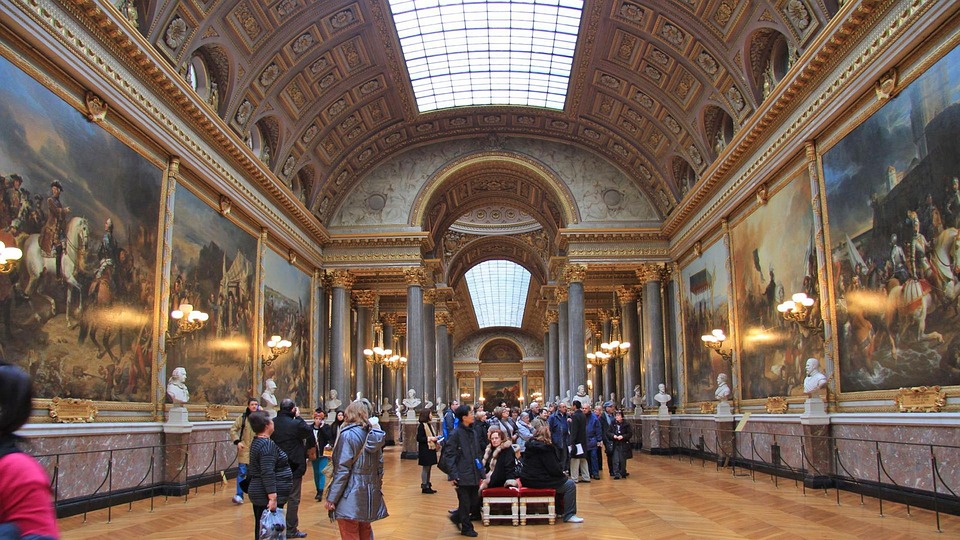Dardania and Its Neighbors: Alliances and Conflicts Through History
Introduction
Dardania, a region located in the southern Balkans, has a rich and complex history characterized by its alliances and conflicts with neighboring territories. This article seeks to explore these dynamics from the ancient periods through the contemporary era, emphasizing how geography, cultural exchanges, and political intrigue have shaped the interactions between Dardania and its neighbors. By tracing the historical trajectory of Dardania, we can gain a deeper understanding of the sociopolitical landscape of the Balkans.
Historical Overview
Ancient Dardania
Dardania, in antiquity, was primarily inhabited by the Dardani, an Indo-European people. The region was strategically positioned between the Illyrians to the west, Thracians to the east, and Macedonians to the south, which significantly influenced its cultural and political makeup. Archaeological evidence points to several settlements, including the city of Dardania, thought to be near present-day Kosovo.
- Geography and Settlement Patterns
The rugged terrain of Dardania facilitated the establishment of fortified settlements and nearby agricultural lands. The region’s rivers and mountain passes were crucial for trade and military movements, making it a contested area among various tribes and empires.
The Hellenistic Period
With the rise of the Macedonian Empire under Alexander the Great, Dardania came under increased external influence. The Dardani allied with the Macedonians for a time but sought independence when the empire fragmented after Alexander’s death.
- Political Alliances
During this period, the Dardani formed various alliances, often shifting based on the prevailing political landscape. Their identity was influenced by interactions with Greek culture, leading to a blend of traditions that marked the Hellenistic stage in Dardania.
The Roman Era
By the 1st century BCE, Dardania fell under Roman control, becoming part of the province of Moesia. This led to significant changes in governance and infrastructure.
- Integration into the Roman Empire
The Romans established roads and economic networks, promoting trade and cultural exchanges between Dardania and other provinces. Despite this integration, the region maintained a distinct identity, often resisting complete assimilation.
Middle Ages: Fragmentation and Power Shifts
The Byzantine Influence
Following the decline of the Western Roman Empire, Dardania was absorbed into the Byzantine Empire. The Byzantines sought to consolidate their control over the region, often encountering fierce resistance from local tribes.
- Religious and Cultural Conflicts
The spread of Christianity introduced new conflicts, especially as the Orthodox and Catholic Churches vied for influence over the region. Dardania became a contested space, reflective of broader religious divides in the Balkans.
Ottoman Conquest
By the late 14th century, the Ottomans began their expansion into the Balkans, with Dardania falling under their rule by the 15th century.
- Socioeconomic Changes
Ottoman administration restructured land ownership and introduced new taxes, resulting in both unrest and economic development. The millet system allowed for a degree of religious autonomy, which fostered a complex social fabric.
The Rise of Nationalism
The 19th century saw a rise in nationalist sentiments throughout the Balkans, including Dardania. This period was marked by conflicts with the Ottoman Empire as local populations sought autonomy and independence.
- Balkan Wars
The implications of the Balkan Wars (1912-1913) were profound, as Dardania was swept into the struggle between emerging nation-states. The conflicts resulted in significant territorial shifts, impacting alliances and future hostilities.
The 20th Century: Wars and Nation-Building
World War I and Its Aftermath
Dardania’s landscape changed significantly after World War I. The dissolution of the Ottoman Empire led to the establishment of the Kingdom of Serbs, Croats, and Slovenes (later Yugoslavia), which included the territory of Dardania.
- Ethnic Tensions
The creation of Yugoslavia was fraught with ethnic tensions. Dardania, populated by Albanians and Slavs, became a flashpoint for conflict as cultural identities clashed under the new state.
World War II Impacts
During World War II, Dardania was occupied by Axis forces, leading to further ethnic violence and displacements. Different factions emerged, each navigating allegiances and conflicts based on wartime dynamics.
- Post-War Yugoslavia
After the war, Dardania became part of Socialist Yugoslavia. This period saw significant infrastructure development and economic growth, yet underlying ethnic tensions remained unresolved, preparing the stage for future strife.
The Yugoslav Wars and Contemporary Issues
The Kosovo Conflict
The dissolution of Yugoslavia in the early 1990s led to a series of violent conflicts, with Kosovo (the modern-day counterpart of Dardania) emerging as a focal point in the struggle for ethnic and national identity.
- NATO Intervention
In 1999, following a brutal crackdown on the Albanian population, NATO intervened, leading to the establishment of a UN-administered territory in Kosovo. This intervention marked a significant turning point in the history of Dardania.
Independence and Regional Tensions
In 2008, Kosovo declared its independence, a move that was met with opposition from Serbia. The process of recognition and state-building has been fraught with challenges, including diplomatic disputes and ongoing ethnic tensions.
- International Relations
Dardania’s relationship with neighboring countries remains complex, often influenced by historical grievances and contemporary geopolitics. The presence of international organizations, such as the EU and NATO, has played a stabilizing role.
Conclusion
Dardania’s history is a tapestry woven with alliances and conflicts that reflect the broader dynamics of the Balkan region. From ancient tribes to modern nation-states, the interplay of external influences and internal identities has shaped Dardania’s unique character. As the region continues to navigate its path toward stability and unity, understanding this historical context is essential for fostering a peaceful coexistence among its diverse populations.
References
- Katičić, R. (1986). Illyrian and Dardanian Studies. Belgrade: The University of Belgrade Press.
- Tzvetkova, M. (2010). Dardania: A Historical Perspective. Sofia: Bulgarian Academy of Sciences.
- Hatzopoulos, M. B. (2001). The Archaeology of Dardania: A New Approach. Thessaloniki: Institute for Balkan Studies.
- Ralph, L. (2018). The Origins of Balkan Nationalism: A History of the Dardani. London: Academic Press.
- Dronkers, J. & Djukic, M. (2021). The Political Landscape of Dardania: Historical and Contemporary Challenges. New York: Routledge.
- Hadžibegić, D. (2015). Kosovo in the 21st Century: Politics, Society, and Culture. Oxford: Oxford University Press.
This article serves as a springboard for further research into the intricate history of Dardania and its relationships with neighboring regions. For scholars, policymakers, and anyone interested in Balkan studies, understanding these dynamics will remain critical for addressing the lingering tensions and fostering cooperation in the region.


























Add Comment